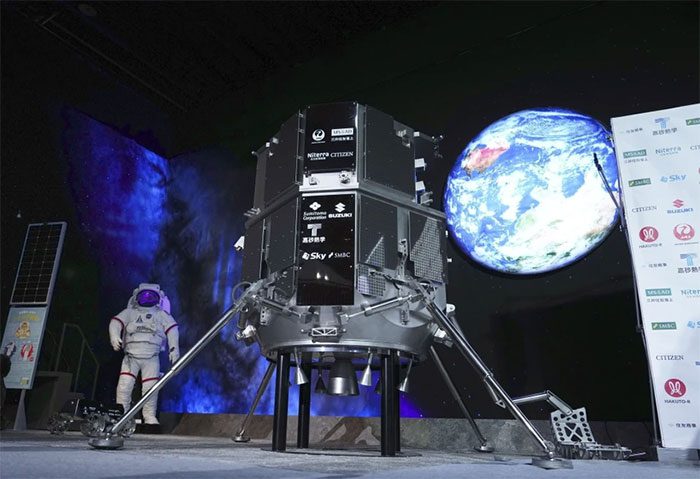With the successful landing of the Smart Lander for Investigating Moon (SLIM) on January 20, Japan has become the fifth country to achieve a “soft landing” on Earth’s only natural satellite.
This milestone also paves the way for Japanese private companies to realize their dream of affordable space tourism.

Model of the Lunar Lander presented by Ispace displayed at the National Museum of Nature and Science in Tokyo, Japan, on April 25, 2023. (Photo: Kyodo/TTXVN).
With ongoing advancements in space technology, the cost of embarking on a space tour has significantly decreased.
Japan’s Future Space Transport System announced in December 2023 that it began accepting reservations for an 8-day, 7-night space tourism package. The standard package costs approximately 3 million yen per person (around $20,000) while the business package is priced at 8 million yen per person (about $53,000) – a substantial reduction compared to the $450,000 price tag currently offered by American space tourism company Virgin Galactic.
The first space tourism tour is expected to take place in 2040.
One of the factors contributing to the reduction in space tourism costs is the significant drop in rocket launch expenses due to the involvement of the private sector.
According to the Center for Strategic and International Studies (CSIS), the cost of launching rockets per kilogram of cargo has drastically decreased since 2010 with the entry of SpaceX.
Using a space shuttle may cost around $65,400, but SpaceX’s Falcon 9 rocket, which can be partially reused, only costs about $2,600. Furthermore, the company is developing the world’s most powerful rocket, Starship, which is expected to be priced at less than $100.
Additionally, the Japan Space Elevator Association estimates that if a space elevator can be constructed in the future, the cost for a space trip could be around 1 million yen (approximately $6,700).
This elevator would be about 96,000 kilometers long, attached to a single cable to transport people and goods.
Previously, this concept was deemed unrealistic due to the need for a super-light and super-strong material to create the cable connecting Earth to space.
However, the invention of carbon nanotubes in 1991 revolutionized this idea, shortening the timeline for realizing a “space elevator.”
Unlike rockets, a “space elevator” is less likely to explode and opens up greater opportunities for non-astronauts to step into space.
The Obayashi Corporation is currently continuing research and development on this concept, hoping that if construction of the Earth-side port begins in 2025, a geostationary orbital station could be operational by 2050.


















































